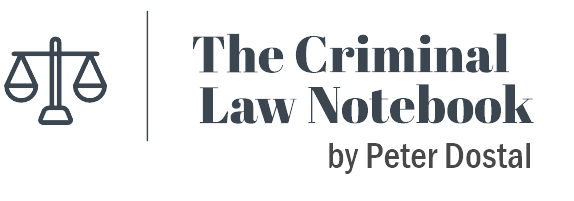Trial Judgement: Difference between revisions
Appearance
Tag: wikieditor |
|||
| Line 34: | Line 34: | ||
: Articulate disposition and declare order(s) | : Articulate disposition and declare order(s) | ||
==Credibility Trial== | ==Credibility Trial 1 == | ||
; INTRODUCTION | ; INTRODUCTION | ||
* Identify accused and charges | * Identify accused and charges | ||
| Line 83: | Line 83: | ||
* reversing the burden of proof in analysis by making the testimony a competition between the accused and crown witnesses. | * reversing the burden of proof in analysis by making the testimony a competition between the accused and crown witnesses. | ||
* relying on bad character evidence without weighing probative vs prejudicial value. | * relying on bad character evidence without weighing probative vs prejudicial value. | ||
===Sexual Assault Trial=== | |||
; Introduction | |||
* list charges, describe dates of trial and witnesses. Identify key allegation and defence position. Identify | |||
; Law | |||
* Presumption of Innocence and Burden of Proof | |||
* When an Accused testifies (ie. law of WD) | |||
* Assessing Credibility and reliability | |||
* Assessing Special Types of Evidence (e.g. children, etc) | |||
* Elements of the Offence | |||
; Evidence | |||
* AB | |||
** Each Incident | |||
* CD | |||
* Defence Evidence | |||
; Analysis | |||
* Accused's evidence | |||
* Complainant's evidence | |||
; Conclusion | |||
==See Also== | ==See Also== | ||
* [[Sentencing Judgement]] | * [[Sentencing Judgement]] | ||
Revision as of 20:16, 17 April 2023
All forms, templates and precedents, including anything found on this page, can be used without the need for any attribution. |
General
- INTRODUCTION
- OVERVIEW
- BACKGROUND FACTS
- organize by headers
- Procedural facts
- Undisputed facts
- review of disputed evidence
- ISSUES
- List issues
- POSITION OF THE PARTIES
- ISSUE 1
- ISSUE 2
- ISSUE 3
- ANALYSIS
-
- ISSUE 1
- Governing Principles
- Principles Applied
- ISSUE 2
- Governing Principles
- Principles Applied
- ISSUE 3
- Governing Principles
- Principles Applied
- ISSUE 1
- CONCLUSION
- Articulate disposition and declare order(s)
Credibility Trial 1
- INTRODUCTION
- Identify accused and charges
- ISSUE
- Given the conflicting evidence, has Crown proven essential elements on a standard of proof beyond a reasonable doubt?
- POSITION OF THE PARTIES
- General summation of the positions of Crown and defence
- BACKGROUND/UNDISPUTED FACTS
- CONTESTED EVIDENCE
- Summarize disputed evidence by each witness
- witness #1
- witness #2
- ...
- accused
- LAW
- Burden of Proof remains on Crown and generally never shifts
- Standard of proof is beyond a reasonable doubt
- DW test
- Tools for Evaluating Evidence
- Judge may accept all, some, or none of a witness's evidence based on an assessment of reliability and credibility
- To that end, Judge may consider
- inconsistencies (with self, others, records, or real evidence),
- corroboration (with others, records, or real evidence),
- capacity to observe (opportunity to observe, emotional state, attention)
- capacity to remember (awareness of importance of observation at time, )
- bias/partiality, manner of testimony, demeanour, and apply common sense to the plausibility of evidence.
- The Judge has discretion make inferences of fact where it is logically and rationally connected to evidence and accords with common sense.
- Touch on relevant impermissible forms of analysis
- ANALYSIS
- Analyze accused testimony (Does the Judge Believe the Accused? If not, does it leave the Judge in doubt on any essential element?)
- In each analysis, apply the "tools for evaluating evidence" (above)
- Analyze defence witness testimony (Does the Judge Believe them? If not, does it leave the Judge in doubt on any essential element?)
- Analyze the alleged victim (Does the Judge believe the alleged victim? )
- Analyze the Crown witnesses (Does the Judge believe the witnesses? )
- Consider what evidence the Judge accepts, including testimony, records, and real evidence.
- Analyze whether on the accepted evidence, has the elements been proven beyond a reasonable doubt.
- CONCLUSION
- Articulate disposition and declare order(s)
- Judges should be cautious of the following typical errors
- finding that the accused tailored his evidence in response to hearing evidence from other witnesses.
- reversing the burden of proof in analysis by making the testimony a competition between the accused and crown witnesses.
- relying on bad character evidence without weighing probative vs prejudicial value.
Sexual Assault Trial
- Introduction
- list charges, describe dates of trial and witnesses. Identify key allegation and defence position. Identify
- Law
- Presumption of Innocence and Burden of Proof
- When an Accused testifies (ie. law of WD)
- Assessing Credibility and reliability
- Assessing Special Types of Evidence (e.g. children, etc)
- Elements of the Offence
- Evidence
- AB
- Each Incident
- CD
- Defence Evidence
- Analysis
- Accused's evidence
- Complainant's evidence
- Conclusion
